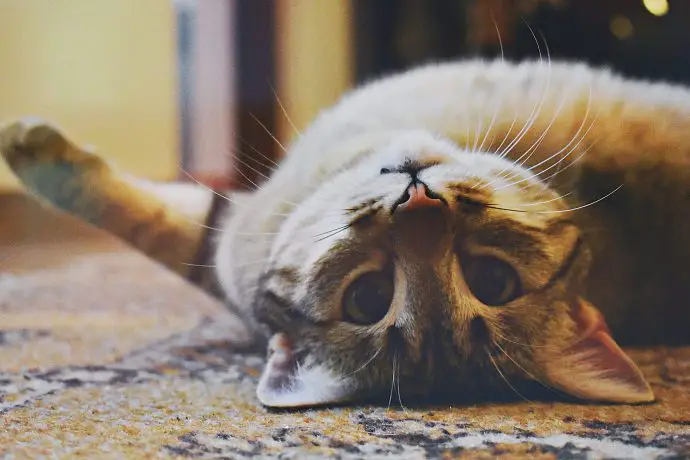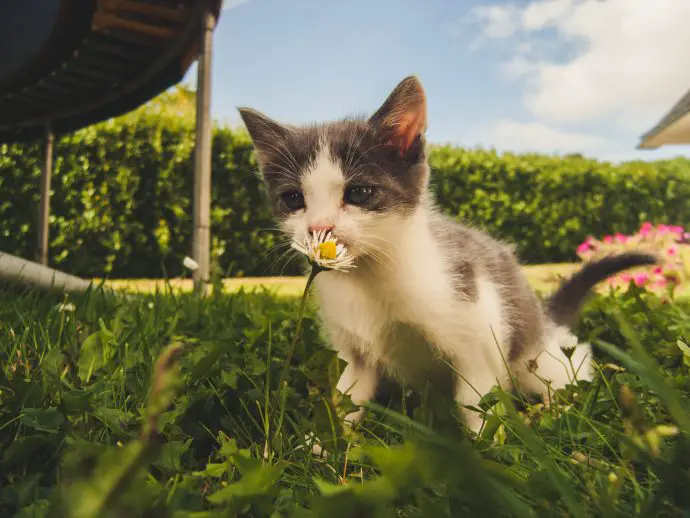You and your cat may speak different languages, but this doesn’t mean that you can’t communicate with each other. Clues such as the position of your cat’s ears and the motion of their tails are subtle yet significant indicators that can reveal your kitty’s feelings and intentions. Understanding how to read those signals will not only give a better idea of how your feline companion is feeling, but it will also help strengthen your bond. Here are 6 common cat behavior that your cat can be done to communicate with you.
1. Howling and Yowling
A howl or a yowl (a loud, drawn-out meow) is typically associated with pain or discomfort. They’re signs that tell you your cat is in some kind of distress, so if your cat is emitting such sounds, go look for them, they may need your help.
If the yowling is excessive then you should take your cat to the vet because excessive yowling can be a sign of illness. To know more about the different signs of feline diseases and how to spot them, you can visit this site so that you’d be better equipped to keep your cat as healthy as possible. Cats are proud creatures who don’t normally like to show when they’re sick or in pain which is why it’s important to know which signs to look for.
2. Chirping Sounds
Your cat peacefully sits on the windowsill observing the world outside when all of a sudden, they start making short chirping noises that sound like a fast and intense teeth chattering. This is a completely normal behavior, typically indicating that your kitty is either excited because they saw a bird or that they’re frustrated because they can’t go outside to hunt. If the chirping is aimed at you, it could be their way of saying that they want you to follow them, probably to the food bowl.
3. Feline Kneading
Cats show affection in a variety of ways. If your cat presses their paws on your arm or your leg and proceeds to massage you back and forth, this is generally their way of telling you that they like you. This feline instinct traces back to your cat’s earliest days of nursing. Kittens love to knead at their mother’s skin as they drink their milk and you’ll find that this is something that they continue to do as they get older and become full grown adult cats. It indicates that they feel safe and are content with you.
4. Kitty Kisses
When your cat is staring at you, they’re probably asking for your attention, but if it turns into an intense staring contest, it could mean that they’re on high alert about something. Cat eyes can sometimes be hard to read so if you’re not sure what your cat is trying to tell you, look for other clues like sounds and poses that your cat could be making.
Does your cat ever slowly blink at you? These slow blinks, commonly known as kitty kisses, are another way that your cat expresses their affection towards you. It’s their way of telling you that they like and trust you.
5. Curious Ears Positions
Your kitty’s ears are a good indication of how they’re feeling; the farther back your cat’s ears are, the more irritable, angry, or frightened your cat may be. Forward and erect ears, on the other hand, can mean that your cat is alert, curious, or happy. If you notice that your kitty’s ears are swiveling back and forth, this can mean that they’re attentively listening to every little sound or that they’re anxious and agitated. Ear positions too can be tricky to interpret so be sure to pay attention to other clues that can help you understand what your cat is trying to communicate.
6. Peculiar Tail Movements
An erect tail with flat fur is usually part of a friendly greeting or an indication that your cat is inquisitive or happy, but if your cat’s fur is standing on end, it can mean that they’re angry or frightened. If your kitty is wagging their tail back and forth, this can be a sign of agitation, especially just before pouncing. The faster the tail is thrashing, the more agitated your cat is. If your cat’s tail is hanging straight up, quivering slightly, this suggests contentment and happiness.
Even the biggest cat lover will admit that cats sometimes do things that are a little bit peculiar, but these curious behaviors are often a cat’s way of communicating. So, the next time you’re observing your feline companion, keep an eye out for a minor flick of their tail or the slightest movement of their ears. These subtle clues are worth a thousand words in the cat world.


